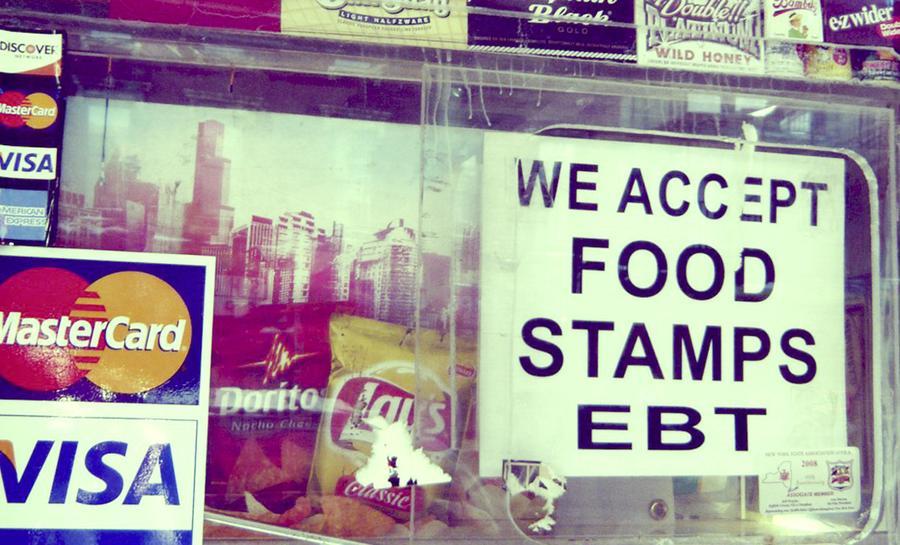When junior Jonathan Segers applied for food stamp benefits in November 2014, the woman who processed his application told him he could have received benefits a year and a half earlier if he had applied then.
Segers said he hesitated to apply because of the social stigma behind asking for help. He wants to go into politics and heard politicians talk negatively about people receiving welfare benefits.
His friends and family helped him realize that food stamps weren’t uncommon on campus, especially among students who live and work off campus. He said some months, after paying rent and buying toiletries, he only had $20 to buy two weeks of groceries.
“After having trouble deciding if I was going to pay rent on time or go to the grocery store, I eventually applied,” he said.
Segers works two jobs, and pays state and federal taxes out of both paychecks.
“This is already something I’ve paid into,” he said.
Segers said that not having to worry about having enough food freed up his schedule and his state of mind. He cut back on his hours, joined the Legion of Black Collegians Gospel Choir and served on the Missouri Students Association Social Justice Committee. He’s even running for MSA vice president.
Last spring, junior Dany Lewis submitted a proposal to Campus Dining Services, which requested that Mizzou Market — Hitt Street begin accepting food stamps. After consideration, the proposal was denied because CDS didn’t feel it was the best use of their resources, Lewis said in an email.
To qualify for food assistance, students must work over 20 hours a week, take part in a work-study program or be taking care of a dependent household member under the age of six, according to the U.S. Department of Agriculture [website](http://www.fns.usda.gov/snap/students).
The Supplemental Nutritional Assistance Program is a federal program to raise nutrition levels and food security in low-income households. The benefits can be used to purchase any food except prepared food, hot food and alcoholic beverages or tobacco from participating retailers. In Missouri, the program is called the Food Stamp Program.
Right now, there are no retailers that accept SNAP benefits within half a mile of campus south of Rollins Street, Lewis said in an email.
Campus Dining Services Director Julaine Kiehn said she doesn’t think spending SNAP funds at a convenience store yields the best value for the dollar or the most benefit to the user, and that a traditional grocery store would be the best option for those using SNAP benefits.
In Columbia, many grocery stores, including Hy-Vee, Walmart and Moser’s Supermarket, accept food stamps. A U.S. Department of Agritculture [interactive map](http://www.fns.usda.gov/snap/retailerlocator) shows at least 50 retailers within 2.4 miles of Jesse Hall that accept food stamp assistance.
Retailers can accept SNAP benefits if they sell foods “on a continuous basis” that fit into four groups considered staple food groups by the USDA — meat, poultry or fish; bread or cereal; vegetables or fruit; and dairy products. Perishable foods must be sold in at least two of the categories. Retailers are also eligible to participate if more than half of the total retail profits of the store comes from eligible food stamp staple foods, according to the USDA [website](http://www.fns.usda.gov/snap/retail-store-eligibility-usda-supplemental-nutrition-assistance-program)
Kiehn said CDS evaluated Lewis’s proposal and determined that Mizzou Market — Hitt Street might fit the requirements, but that the cost of implementing the program was too great.
“We would have to pass those costs on to our customer,” she said.
Lewis said there was no way to estimate the number of students receiving SNAP benefits on campus due to privacy laws.
In Fall 2012, nearly 20 MU students were homeless, according to the [Tiger Pantry Website.](http://tigerpantry.missouri.edu/not-so-fun-facts/)
In Missouri in fiscal year 2013, 29 percent of adults receiving food stamp assistance were under 30, according to the [Family Support Division Annual Data Report](http://dss.mo.gov/re/pdf/fsd/2013-missouri-family-support-annual-report.pdf). In August 2015, 846,970 people in Missouri received assistance from the food stamp program.
Segers said he was reluctant to accept food stamp benefits but once he did, he became more confident. He said now he reaches out to students and encourages them to apply for SNAP benefits after he felt their impact on his life.
“It didn’t just free up my schedule and state of mind,” he said. “It helped me become more inclusive on campus and actually get to be a student.”








